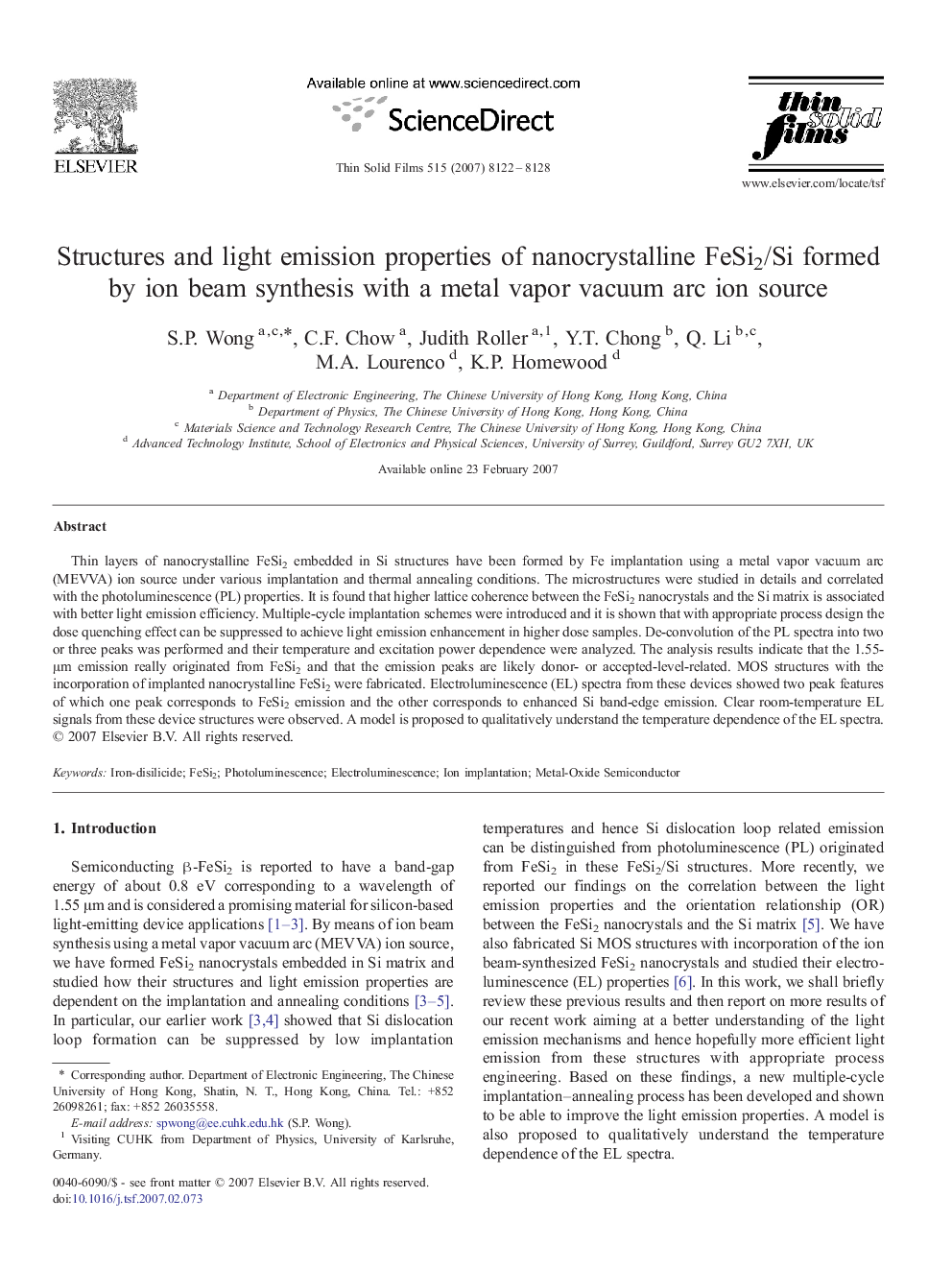| Article ID | Journal | Published Year | Pages | File Type |
|---|---|---|---|---|
| 1674203 | Thin Solid Films | 2007 | 7 Pages |
Thin layers of nanocrystalline FeSi2 embedded in Si structures have been formed by Fe implantation using a metal vapor vacuum arc (MEVVA) ion source under various implantation and thermal annealing conditions. The microstructures were studied in details and correlated with the photoluminescence (PL) properties. It is found that higher lattice coherence between the FeSi2 nanocrystals and the Si matrix is associated with better light emission efficiency. Multiple-cycle implantation schemes were introduced and it is shown that with appropriate process design the dose quenching effect can be suppressed to achieve light emission enhancement in higher dose samples. De-convolution of the PL spectra into two or three peaks was performed and their temperature and excitation power dependence were analyzed. The analysis results indicate that the 1.55-μm emission really originated from FeSi2 and that the emission peaks are likely donor- or accepted-level-related. MOS structures with the incorporation of implanted nanocrystalline FeSi2 were fabricated. Electroluminescence (EL) spectra from these devices showed two peak features of which one peak corresponds to FeSi2 emission and the other corresponds to enhanced Si band-edge emission. Clear room-temperature EL signals from these device structures were observed. A model is proposed to qualitatively understand the temperature dependence of the EL spectra.
